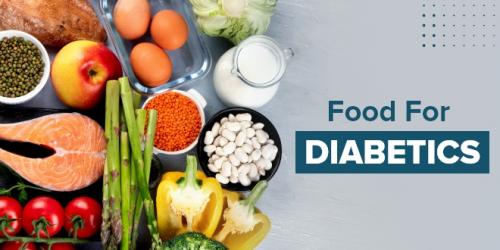Diet Chart for Diabetic Patient

A diabetes meal plan serves as a guide for when what, and how much to
eat to get the nutrition you require while keeping your blood sugar levels
within your target range. A good meal plan will take your goals, tastes, and
lifestyle into account, as well as any medications you're taking.
What
to Avoid?
If you think avoiding sugar is enough, then you are unfortunately wrong.
Carbohydrates are equally harmful to your body. Keeping a note of how many
carbs you consume and setting a limit for each meal will help you stay within
your goal blood sugar range.
Carbohydrate, protein, and fat are the three macronutrients found in
food that provide calories — and affect your blood sugar. You should focus on
adopting a long-term dietary change in your life to control and manage diabetes
effectively.
A
Guide to Balanced Diet for Diabetes
Use a small plate (a 9-inch plate might help you).
- Salad, green beans,
broccoli, cauliflower, cabbage, and carrots can be used to fill half of
the bowl. They are ideal food for diabetics.
- One quarter should be filled
with lean protein, such as chicken, turkey, beans, tofu, or eggs.
- Fill one-quarter of your
plate with carbohydrate-rich meals. Grain, starchy vegetables (such as
potatoes and peas), rice, pasta, beans, fruit, and yoghurt are all high in
carbohydrates. A cup of milk is also a carbohydrate food.
Carbohydrates
Make the best options when it comes to carbohydrate items to lessen the
influence on blood glucose levels.
- Pick fresh, whole fruit,
rather than dried fruit, or fruit juice.
- You can consume whole grains
like brown and wild rice, popcorn, oats, and quinoa.
- Try to avoid simple
carbohydrate foods, such as chips, cookies, cakes, and honey as they can
quickly raise blood glucose levels.
Protein
Protein is used by the body to produce, repair, and maintain most of its
tissues and organs. Proteins are also required for immune system function and
aid in a variety of other physiological activities.
Good
sources of protein:
Chicken
Fish
Beans
Cheese (look for 2%)
Eggs
Nut butter
Plant-based veggie burgers
Black beans
Kidney beans
Lentils
Fat
Fat does not raise blood sugar; in fact, high-fat meals may cause your
stomach to empty more slowly, resulting in a slower rise in blood sugar.
However, it is advised to take it in moderation as high-fat can lead to
heart-related problems.
Concentrate
on unsaturated fats (monounsaturated and polyunsaturated), which are mostly derived
from plants.
-Olive oil
-Canola oil
-Avocados
-Almonds
-Mayonnaise
-Walnuts
-Salad dressing
-Flaxseed
Try
to limit saturated fats such as:
-Butter
-Cream
-Bacon
-Coconut
Your
Meal Should Include:
- 1/4 carbohydrate/starchy foods
- 1/4 protein
- 1/2 non-starchy vegetables
- A teaspoon or so for your fat
serving
Planning a meal can be a tedious task. Get in touch with nutritionists for free to find out what’s best for you.
Post Your Ad Here
Comments